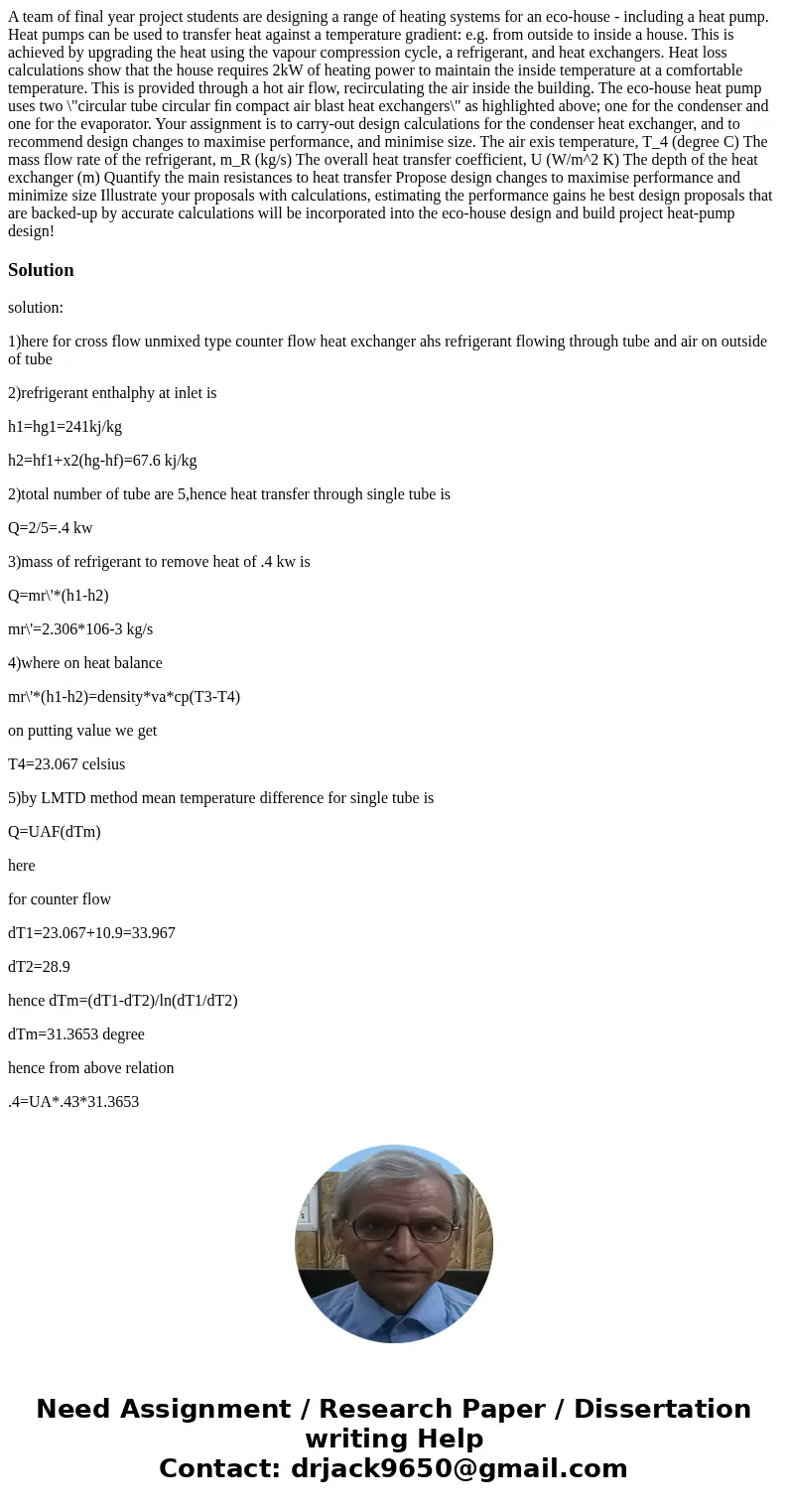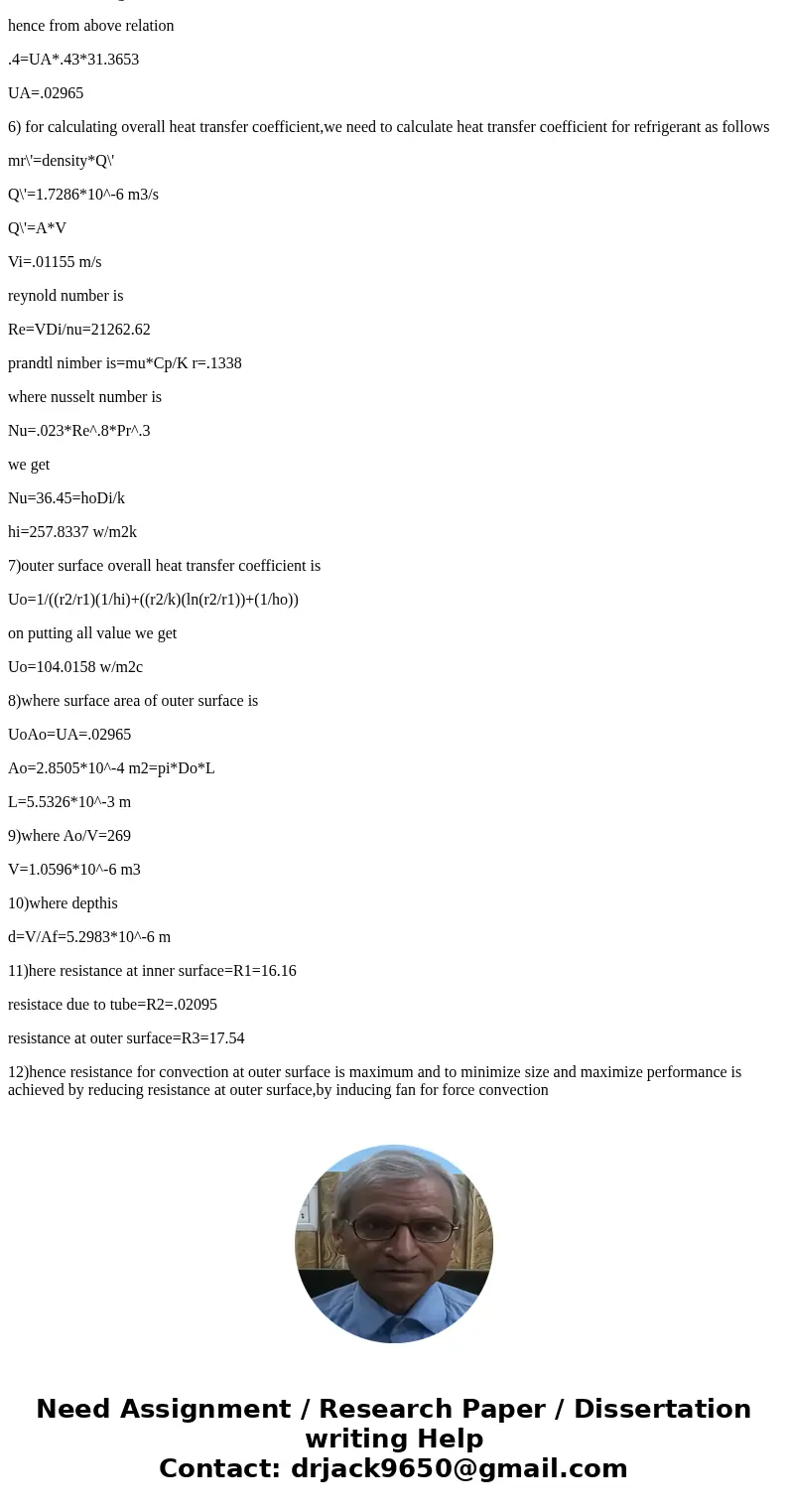A team of final year project students are designing a range
Solution
solution:
1)here for cross flow unmixed type counter flow heat exchanger ahs refrigerant flowing through tube and air on outside of tube
2)refrigerant enthalphy at inlet is
h1=hg1=241kj/kg
h2=hf1+x2(hg-hf)=67.6 kj/kg
2)total number of tube are 5,hence heat transfer through single tube is
Q=2/5=.4 kw
3)mass of refrigerant to remove heat of .4 kw is
Q=mr\'*(h1-h2)
mr\'=2.306*106-3 kg/s
4)where on heat balance
mr\'*(h1-h2)=density*va*cp(T3-T4)
on putting value we get
T4=23.067 celsius
5)by LMTD method mean temperature difference for single tube is
Q=UAF(dTm)
here
for counter flow
dT1=23.067+10.9=33.967
dT2=28.9
hence dTm=(dT1-dT2)/ln(dT1/dT2)
dTm=31.3653 degree
hence from above relation
.4=UA*.43*31.3653
UA=.02965
6) for calculating overall heat transfer coefficient,we need to calculate heat transfer coefficient for refrigerant as follows
mr\'=density*Q\'
Q\'=1.7286*10^-6 m3/s
Q\'=A*V
Vi=.01155 m/s
reynold number is
Re=VDi/nu=21262.62
prandtl nimber is=mu*Cp/K r=.1338
where nusselt number is
Nu=.023*Re^.8*Pr^.3
we get
Nu=36.45=hoDi/k
hi=257.8337 w/m2k
7)outer surface overall heat transfer coefficient is
Uo=1/((r2/r1)(1/hi)+((r2/k)(ln(r2/r1))+(1/ho))
on putting all value we get
Uo=104.0158 w/m2c
8)where surface area of outer surface is
UoAo=UA=.02965
Ao=2.8505*10^-4 m2=pi*Do*L
L=5.5326*10^-3 m
9)where Ao/V=269
V=1.0596*10^-6 m3
10)where depthis
d=V/Af=5.2983*10^-6 m
11)here resistance at inner surface=R1=16.16
resistace due to tube=R2=.02095
resistance at outer surface=R3=17.54
12)hence resistance for convection at outer surface is maximum and to minimize size and maximize performance is achieved by reducing resistance at outer surface,by inducing fan for force convection


 Homework Sourse
Homework Sourse